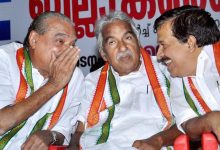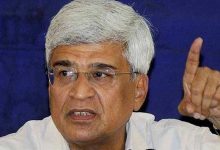Irrespective of the rosy picture portrayed for 2018-19 by the Economic Survey, the Modi government’s fifth and final report, the authors of the document have noted a heightened performance anxiety relative to expectations. Here’s an analysis, for Different Truths.
The performance anxiety stemming from the four years of dismal performance of the Indian economy will continue to haunt the government and the people of the country, irrespective of the rosy picture portrayed for 2018-19 by the Economic Survey, the Modi government’s fifth and final. Even the authors of the document have noted a heightened performance anxiety relative to expectations.
‘Humans place greater welfare weights on avoiding loss than experiencing equivalent gain’ is the mainstay of behavioural economics. It also holds true in politics because people tend to vote against a political establishment if they suffer loss while ignoring the equivalent gain. This is the main reason for the heightened anxiety because economic policy over the past four years has seen a series of policy experiments, which brought immediate loss with a potential gain in the future.
 Individuals are compelled to shell out more money for goods and services they use because of the policies adopted by the government. After the implementation of GST, the number of indirect taxpayers has increased by 50 percent. Goods and services have increasingly been becoming costly despite the government’s claim that inflation has been more or less under control. The loss suffered by the people in hard cash cannot be arrested simply by claims. Moreover, the cost of living is going to rise in 2018 due to rising petroleum prices along with its increasing domestic demand.
Individuals are compelled to shell out more money for goods and services they use because of the policies adopted by the government. After the implementation of GST, the number of indirect taxpayers has increased by 50 percent. Goods and services have increasingly been becoming costly despite the government’s claim that inflation has been more or less under control. The loss suffered by the people in hard cash cannot be arrested simply by claims. Moreover, the cost of living is going to rise in 2018 due to rising petroleum prices along with its increasing domestic demand.
When defined in terms of social security, such as EPF and ESI, the non-farm employment in the formal sector is only around 7.5 crore (31 percent of the total employed), but the recently implemented GST network shows the number at 12.7 crores (53 percent). This discrepancy shows how badly our workforce is being treated by the employers. Not being happy on this account, coupled with their fear regarding the impending threat of so-called labour reform and changes in the land acquisition laws in favour of the business and industries, might also have an adverse political impact on the government.
How the government is arm-twisting the people in various ways is well known. There are many allegations against CBI and the department of tax, especially after demonetisation and the implementation of GST. Now data shown in the document reveals that only 27 percent direct tax cases stand judicial scrutiny in the ITAT/CESTAT and the Supreme Court. It is only 13 percent in the High Courts. As for indirect tax cases, only 12 percent in the ITAT/CESTAT, 11 per cent in the Supreme Court, and 46 per cent in the High Courts stand valid. A substantial vote bank is already unhappy with the way the government departments are misused. The high profile cases are only 0.2 per cent accounting for 56 per cent of the value at stake. About 66 percent of the pending cases, each less than Rs 10 lakhs, account for only 1.8 percent of the value at stake. This group of people can safely be assumed to work against Modi in the general election.
 Agriculture matters in this country because it provides a livelihood for about 70 per cent of our population. Though its contribution to GDP is only 16 per cent, still substantial, it provides employment to 49 per cent of the people. Poor agricultural performance leads to inflation, farmer distress, and unrest, and larger political and social disaffection – all of which can hold back the economy, the Survey says. The first advanced estimate of the national income for the year 2017-18 has estimated a growth of 2.1 percent in its Gross Value Added (GVA) (less than half) as against the previous year’s growth rate of 4.9 percent. Majority of the voters are from this class and may adversely impact the political fortune of Modi unless some attractive package is announced and implemented in this election year.
Agriculture matters in this country because it provides a livelihood for about 70 per cent of our population. Though its contribution to GDP is only 16 per cent, still substantial, it provides employment to 49 per cent of the people. Poor agricultural performance leads to inflation, farmer distress, and unrest, and larger political and social disaffection – all of which can hold back the economy, the Survey says. The first advanced estimate of the national income for the year 2017-18 has estimated a growth of 2.1 percent in its Gross Value Added (GVA) (less than half) as against the previous year’s growth rate of 4.9 percent. Majority of the voters are from this class and may adversely impact the political fortune of Modi unless some attractive package is announced and implemented in this election year.
The industrial performance has also been very poor since June 2016. Our industries were performing at less than 75 percent of capacity after demonetisation in November 2016. Industry sector has been performing badly from June 2016. From April to November this year, industrial production grew only at the rate of 3.2 percent as against 5.5 percent in the same period of the previous fiscal year.
The ratio of a gross fixed capital formation to GDP in 2007 was 35.6 percent, which has slid down to 26.4 percent in 2017. The ratio of domestic saving to GDP has also fell from 38.3 percent to 29 percent in 2016. Such sharp swings in investment and saving rates have never occurred in India’s history – not even during the balance-of-payments crises of 1991 or even during the Asian financial crisis of the late 1990s. In such a situation economic growth can be achieved only through incentives for investment (rather than saving) and production.
 India’s investment slowdown is unusual in that it is so far relatively moderate in magnitude, long in duration, and started from a relatively high peak rate of 36 percent of GDP. Furthermore, it has a specific nature, in that it is a balance sheet-related slowdown. In other words, many companies have had to curtail their investments because their finances are stressed, as the investments they undertook during the boom have not generated enough revenues to allow them to service the debts that they have incurred.
India’s investment slowdown is unusual in that it is so far relatively moderate in magnitude, long in duration, and started from a relatively high peak rate of 36 percent of GDP. Furthermore, it has a specific nature, in that it is a balance sheet-related slowdown. In other words, many companies have had to curtail their investments because their finances are stressed, as the investments they undertook during the boom have not generated enough revenues to allow them to service the debts that they have incurred.
The government will find it very difficult to give large incentives for investment and production for both agriculture and industries, especially when there will be shortage of required finances, and the banking system will be under great stress because of bad debts, surplus of unproductive cash-in-hand, for which there is comparatively very low off-take, and burden of interest. The banking crisis is induced by the experiment of demonetisation.
Nevertheless, the Survey says that the major reforms undertaken over the past year such as the transformational GST, the long-festering twin balance sheet (TBS) problem redressed by sending the major stressed companies for resolution under the new Indian Bankruptcy Code, and implementing a major recapitalisation package to strengthen the public sector banks, etc would be dissipating the effects of earlier policy actions, and the export uplift from the global recovery the economy has begun to accelerate in the second half of the year 2017-18. This should allow real GDP growth to reach 6.75 percent for the year as a whole, rising to 7-7.5 percent in 2018-19.
If it happens, it would reinstate India as the world’s fastest-growing major economy, but the government has miles to go before the general elections. It would be very difficult to convince people of their well being with falling growth rate in agriculture and industry, but rising GDP.
Gyan Pathak
©IPA Service
Photos from the Internet
#GDP #Demonetisation #EconomyOfIndia #IndianBankruptcyCode #GST #EconomicSurvey #IPA #DifferentTruths





 By
By
 By
By
 By
By